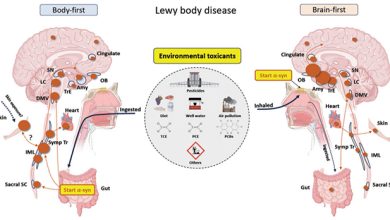Bright Light, Sharper Mind: Lighting Affects Cognition

Summary: A new study explores the impact of different light levels on cognitive function by influencing the brain’s hypothalamic activity. The study used advanced 7 Tesla fMRI to show that higher light levels improve cognitive performance during complex tasks.
This link between light exposure and brain function suggests the potential of light-based therapies to improve alertness and cognitive abilities throughout the day. The findings pave the way for further research into how light affects various brain structures and could inform the development of non-invasive treatments for cognitive fatigue and sleep disorders.
Highlights:
- Higher levels of light exposure correlated with increased activity in the posterior hypothalamus and improved performance in cognitive tasks.
- The study used 7 Tesla fMRI, providing high-resolution information on how light influences hypothalamic activity.
- Although increasing light levels improved cognitive performance, the exact neural mechanisms and brain regions involved require further exploration.
Source: eLife
Exposure to higher levels of light may help people feel more awake and increase their cognitive performance, likely by influencing the activity of parts of a brain region called the hypothalamus, new research suggests.
The study, published today as a revised preprint in eLifeis described by the editors as being of fundamental importance and represents a key advance in our understanding of how different levels of light affect human behavior.
The strength of the evidence is hailed as compelling, supporting the authors’ analyzes of the complex interplay between light exposure, hypothalamic activity, and cognitive function.
With further research, the findings could be used to inform various light therapy treatments to increase an individual’s sleep quality and emotional state, and help them feel more awake and perform tasks better. All day long.
The biological effects of exposure to light have been well documented in recent years. Higher illuminance has been shown to boost alertness and cognitive performance. These effects rely primarily on a subclass of photosensitive cells in the retina, called ipRCGs.
These cells project to several areas of the brain, but the projections are found most densely in the hypothalamus, which is generally associated with the regulation of circadian rhythms, sleep and alertness, as well as cognitive functions.
However, this knowledge of the brain circuits that underlie the biological effects of light comes almost entirely from studies in animals.
“Transmitting findings about how light exposure affects the brains of animal models to humans is a difficult process, because the subsequent maturation of the cortex in humans allows for much more complex cognitive processing,” explains Dr. lead author Islay Campbell, former PhD student at GIGA. -CRC Human Imaging – now PhD – University of Liège, Belgium.
“In particular, whether the nuclei of the hypothalamus contribute to the stimulating impact of light on cognition is not established.”
To better understand the impact of light on human cognition, Campbell and colleagues recruited 26 healthy young adults to participate in their study.
They asked each participant to perform two auditory cognitive tasks; an executive task modified from the “n-back task” in which participants had to determine whether a current sound was the same as one they had heard two items earlier, or contained the letter “K”; and an emotional task, in which participants had to identify the gender of a voice spoken in a neutral tone or in an angry tone.
Each task was completed while individuals were alternately placed in darkness or exposed to short periods of light across four illumination levels.
The team used a technique called 7 Tesla functional magnetic resonance imaging, which has a higher resolution and signal-to-noise ratio than standard 3 Tesla MRI, to assess the impact of different light levels on the activity of the hypothalamus during tasks. .
They found that, during both tasks, higher light levels triggered increased activity in the posterior hypothalamus. In contrast, the inferior and anterior hypothalamus followed a seemingly opposite pattern, exhibiting reduced activity under higher light levels.
Next, the team sought to determine whether these changes in regional hypothalamus activity were linked to a change in cognitive performance. They focused on assessing participants’ performance during the executive task, as it required a higher cognitive level to solve.
Their analysis found that higher light levels actually led to better performance in the task, indicating an increase in cognitive performance. Importantly, increased cognitive performance under higher illumination was found to be significantly negatively correlated with posterior hypothalamus activity.
This makes it unlikely that activity in the posterior hypothalamus directly mediates the positive impact of light on cognitive performance, and possibly hints that other brain regions are involved, requiring further investigation.
On the other hand, posterior hypothalamus activity was found to be associated with an increased behavioral response to the emotional task. This suggests that the association between cognitive performance and posterior hypothalamus activity may be context dependent: in some tasks, certain hypothalamus nuclei or neuronal populations may be recruited to increase performance, but not in others. others.
The authors call for future work in this area to assess the impact of light on other structures or entire brain networks to determine how different light levels alter their crosstalk and interactions with the cortex to cause behavioral changes.
“It is important to answer the questions that remain from our study, because acting on light represents a promising and easy-to-implement way to reduce fatigue throughout the day, improving cognitive defects and allowing a night’s sleep restorative with minimal cost and side effects,” says Campbell.
“Our results demonstrate that the human hypothalamus does not respond uniformly to different light levels when engaged in a cognitive challenge,” explains lead author Gilles Vandewalle, co-director of GIGA-CRC Human Imaging, University of Cork.
“Higher light levels have been shown to be associated with higher cognitive performance, and our results indicate that this stimulating impact is mediated, in part, by the posterior hypothalamus.
“This region is likely to work in conjunction with the decreased activity of the anterior and inferior hypothalamus, as well as other non-hypothalamus brain structures that regulate arousal.”
“Targeted lighting for therapeutic use is an exciting prospect. However, this will require a more complete understanding of how light affects the brain, particularly at the subcortical level. Our results represent an important step towards this goal, at the level of the hypothalamus,” notes Campbell.
About this news on cognitive research
Author: Emily Packer
Source: eLife
Contact: Emily Packer – eLife
Picture: Image is credited to Neuroscience News
Original research: Free access.
“Regional response to light irradiance across the human hypothalamus” by Islay Campbell et al. eLife
Abstract
Regional response to light irradiance across the human hypothalamus
Light exerts multiple non-image-forming biological effects on physiology, including stimulation of alertness and cognition. However, the subcortical circuits underlying the stimulating impact of light are not established in humans.
We used 7 Tesla functional magnetic resonance imaging to assess the impact of variations in light illuminance on regional hypothalamus activity in healthy young adults (N = 26; 16 females; 24.3 ± 2.9 years) performed two auditory cognitive tasks.
We find that, during both executive and emotional tasks, higher illumination triggers an increase in activity on the posterior part of the hypothalamus, which includes part of the tuberomamillary nucleus and the posterior part of the lateral hypothalamus.
On the other hand, the increase in illumination evokes a decrease in activity on the anterior and ventral parts of the hypothalamus, including in particular the suprachiasmatic nucleus and another part of the tuberomamillary nucleus.
Critically, executive task performance was improved under higher illumination and was negatively correlated with activity in the posterior hypothalamus area.
These results reveal the distinct local dynamics of different regions of the hypothalamus that underlie the impact of light on cognition. They may suggest that light acts on the orexin and histamine system to affect the quality of wakefulness.
News Source : neurosciencenews.com
Gn Health




